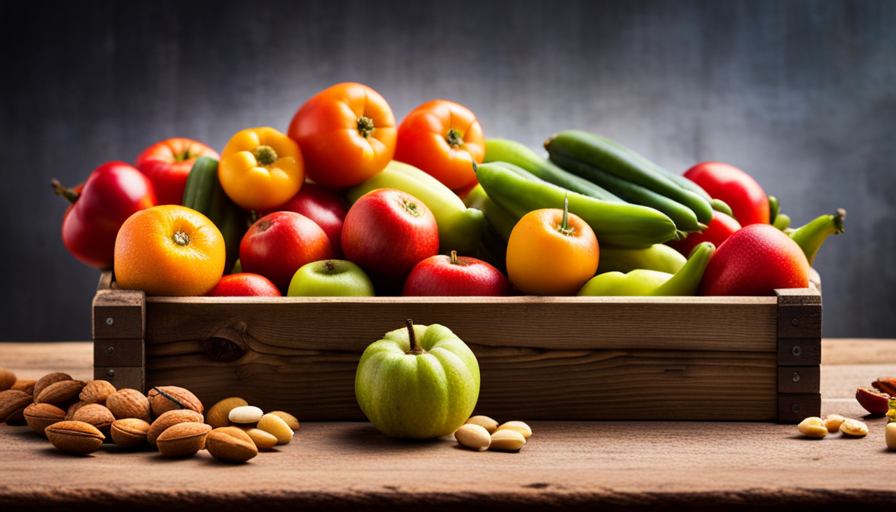As a food service worker in the United States, I often face various challenges in the kitchen. One of my key responsibilities is to handle cooked and raw poultry correctly to prevent cross-contamination. Despite working on creating delicious dishes, I must remain cautious of the potential risks linked to poultry. Adhering to these safety measures is crucial for ensuring the well-being of our customers.
To address this issue, it is essential to follow a set of guidelines and protocols. First and foremost, washing hands properly and frequently is paramount.
Additionally, keeping cooked and raw poultry separate, using separate utensils and cutting boards, and cooking poultry to the correct temperature are crucial steps in preventing cross-contamination.
Storing poultry at the proper temperature, practicing good personal hygiene, and educating staff on food safety protocols are equally important.
In this article, I will provide a detailed and thorough guide on how food service workers can safely handle cooked and raw poultry. By implementing proper hygiene practices and staying informed about food safety guidelines and regulations, we can ensure a safe and enjoyable dining experience for all.
Key Takeaways
- Separate cooked and raw poultry to prevent cross-contamination.
- Use separate utensils and cutting boards for cooked and raw poultry.
- Cook poultry to the correct internal temperature of 165°F/74°C.
- Store poultry at the proper temperatures: 40°F or below for raw and 140°F or above for cooked.
Wash Hands Properly and Frequently
To keep those delicious meals safe and germ-free, it’s crucial to wash your hands properly and frequently when handling both cooked and raw poultry. Proper handwashing techniques are essential in the food service industry, especially when dealing with poultry, as it can harbor harmful bacteria like Salmonella and Campylobacter. These bacteria can cause foodborne illnesses if not handled with care.
To ensure proper hand hygiene, start by wetting your hands with warm water. Apply enough soap to create a good lather and scrub your hands vigorously for at least 20 seconds. Pay special attention to the areas between your fingers, under your nails, and the back of your hands. Rinse thoroughly under running water, making sure to remove all the soap residue.
It is important to wash your hands before and after handling both cooked and raw poultry. Before handling, this step helps to prevent any potential cross-contamination from other surfaces or ingredients. After handling, it removes any bacteria that may have transferred from the poultry.
Next, we will discuss the importance of keeping cooked and raw poultry separate to further ensure food safety. It is crucial to prevent the spread of bacteria and reduce the risk of contamination.
Keep Cooked and Raw Poultry Separate
How can we ensure that cooked and raw poultry stay separate? One of the key ways to prevent cross contamination and keep cooked and raw poultry separate is by implementing separate storage. Here are some important guidelines to follow:
-
Use separate containers: Store cooked poultry in airtight containers or sealed bags to prevent any potential contact with raw poultry.
-
Keep raw poultry on lower shelves: Store raw poultry on the bottom shelves of the refrigerator or in separate drawers to avoid any drips or leaks onto cooked poultry or other food items.
-
Use color-coded labels: Clearly mark containers or bags for raw and cooked poultry with different colors to easily distinguish between the two.
-
Clean storage area regularly: Regularly clean and disinfect the refrigerator, shelves, and drawers to minimize the risk of cross contamination.
By implementing these practices, food service workers can greatly reduce the risk of cross contamination and ensure that cooked and raw poultry remain separate. This is crucial for maintaining food safety and preventing the spread of harmful bacteria.
In the next section, we’ll explore the importance of using separate utensils and cutting boards to further prevent cross contamination.
Use Separate Utensils and Cutting Boards
Implementing separate utensils and cutting boards is essential for maintaining the highest level of food safety and protecting ourselves and our loved ones from potential contamination. To prevent cross-contamination, it’s crucial to use different utensils and cutting boards for cooked and raw poultry.
This practice helps to minimize the risk of spreading harmful bacteria, such as Salmonella or Campylobacter, which can cause foodborne illnesses.
When handling cooked poultry, I make sure to use clean utensils that haven’t come into contact with raw poultry. This includes knives, forks, tongs, and any other tools used during the cooking process. By doing so, I can avoid transferring any bacteria from raw poultry to the cooked meat.
Additionally, I always use separate cutting boards for cooked and raw poultry. This prevents any juices from raw poultry, which may contain harmful bacteria, from contaminating the cooked meat. I make sure to thoroughly clean and sanitize the cutting boards after each use to maintain proper food handling practices.
By implementing these measures, we can significantly reduce the risk of cross-contamination and ensure the safety of the food we prepare.
Next, I’ll discuss the importance of cooking poultry to the correct temperature, further ensuring its safety and deliciousness.
Cook Poultry to the Correct Temperature
When cooking poultry, it’s crucial to ensure it reaches the correct internal temperature to kill any harmful bacteria, such as Salmonella or Campylobacter, which can cause foodborne illnesses.
Did you know that according to the USDA, the safe minimum internal temperature for poultry is 165°F (74°C)? Proper cooking techniques play a vital role in ensuring that poultry is cooked thoroughly and safely.
One of the most effective ways to determine if poultry is cooked to the correct temperature is by using a meat thermometer. Insert the thermometer into the thickest part of the meat, making sure it doesn’t touch bone or gristle. Wait for a few seconds until the temperature stabilizes, and ensure it reads 165°F (74°C) or higher. This simple step can prevent the risk of foodborne illnesses.
Using a meat thermometer eliminates any guesswork and ensures that poultry is cooked evenly. It is important to remember that visual cues alone, such as the color of the meat or the clearness of the juices, are not reliable indicators of doneness. To guarantee food safety, the internal temperature must be reached.
Once you’ve cooked the poultry to the correct temperature, it’s essential to store it at the proper temperature to maintain its safety and quality without compromising it.
Store Poultry at the Proper Temperature
To ensure the proper storage of poultry, it is crucial to maintain the correct temperature. Proper storage of poultry is essential to prevent the growth of harmful bacteria that can cause foodborne illnesses. Temperature control plays a significant role in maintaining the quality and safety of poultry.
The table below provides a visual representation of the recommended storage temperatures for different types of poultry:
| Type of Poultry | Recommended Storage Temperature |
|---|---|
| Raw Chicken | 40°F or below |
| Cooked Chicken | 140°F or above |
| Raw Turkey | 40°F or below |
| Cooked Turkey | 140°F or above |
By storing raw poultry at 40°F or below, you can inhibit the growth of bacteria like Salmonella and Campylobacter. On the other hand, cooked poultry should be stored at 140°F or above to keep it out of the danger zone where bacteria can multiply rapidly.
Maintaining proper storage temperatures for poultry is just one aspect of food safety in a food service setting. In addition to temperature control, it is also crucial to clean and sanitize surfaces and equipment regularly to prevent cross-contamination.
Clean and Sanitize Surfaces and Equipment
Make sure you regularly scrub and sanitize all surfaces and equipment to create a clean and safe environment. Cleaning procedures are essential in preventing cross-contamination and maintaining the quality of your food.
Start by removing any food residue or debris from all surfaces using a clean cloth or sponge. Then, wash the surfaces with hot, soapy water, paying special attention to areas that come into direct contact with poultry, such as cutting boards and countertops. Rinse thoroughly to remove any soap residue.
After cleaning, sanitize all surfaces and equipment using an approved sanitizer. Follow the manufacturer’s instructions for the correct dilution and contact time. Make sure to sanitize not only the surfaces but also any utensils, knives, and equipment used in handling poultry.
Regularly check and maintain equipment, such as refrigerators and freezers, to ensure they are functioning properly and maintaining the correct temperature.
By regularly cleaning and sanitizing surfaces and equipment and performing equipment maintenance, you can prevent the spread of harmful bacteria and create a safe environment for handling poultry.
Transitioning into the subsequent section about ‘practice good personal hygiene,’ it’s important to remember that proper cleaning and sanitation go hand in hand with maintaining personal hygiene.
Practice Good Personal Hygiene
Maintaining good personal hygiene is crucial for creating a safe and clean environment while handling poultry. As a food service worker, I understand the importance of personal hygiene practices, especially when it comes to handling raw and cooked poultry.
One of the most essential practices is proper handwashing. Before and after handling poultry, I make sure to wash my hands thoroughly with soap and warm water for at least 20 seconds. This helps to remove any potential bacteria or contaminants that may be present. Additionally, I always use disposable gloves when handling poultry to further minimize the risk of cross-contamination.
In addition to handwashing and glove usage, I also follow other personal hygiene practices. This includes wearing clean and appropriate attire, such as a clean uniform and hairnet to prevent any hair or dirt from coming into contact with the poultry. I avoid touching my face, hair, or any other part of my body while handling poultry to prevent the transfer of bacteria.
By practicing good personal hygiene, I ensure that the poultry remains safe and uncontaminated throughout the food handling process. This not only protects the health and safety of the consumers but also maintains the reputation of the establishment.
As I transition into the subsequent section about educating staff on food safety protocols, it’s important to emphasize the significance of personal hygiene in preventing foodborne illnesses.
Educate Staff on Food Safety Protocols
When educating your staff on food safety protocols, it’s crucial to emphasize the importance of proper training and knowledge to ensure the safety of all food handling processes. Staff training plays a vital role in preventing foodborne illnesses and maintaining a high standard of hygiene in the workplace.
By providing comprehensive training sessions, staff members can develop a thorough understanding of the potential risks associated with handling cooked and raw poultry. They should be educated on the proper techniques for handling, storing, and cooking poultry to minimize the risk of cross-contamination.
During the training sessions, it is essential to cover topics such as handwashing, personal protective equipment, and proper cleaning and sanitizing procedures. By instilling these practices into the staff’s daily routine, they will become second nature and help prevent the spread of harmful bacteria.
Additionally, staff members should be educated about the importance of temperature control, including the proper cooking temperatures for poultry to ensure its safety for consumption.
By equipping your staff with the necessary knowledge and skills, you can significantly reduce the risk of foodborne illnesses. Implementing proper cross-contamination prevention measures, such as using separate cutting boards and utensils for raw and cooked poultry, will further enhance the safety of food handling processes.
Implement Proper Cross-Contamination Prevention Measures
To ensure the safety of all food handling processes, it’s essential to equip your staff with the necessary knowledge and skills to implement proper cross-contamination prevention measures. Cross-contamination occurs when bacteria or other harmful substances are transferred from one surface to another, leading to the potential contamination of food. By implementing proper prevention methods, such as using separate cutting boards for raw and cooked poultry, practicing proper hand hygiene, and utilizing appropriate cleaning and sanitizing techniques, you can significantly reduce the risk of cross-contamination.
One effective way to prevent cross-contamination is to educate your staff on the importance of proper food storage. Ensuring that raw poultry is stored separately from other foods, especially ready-to-eat items, can help prevent the transfer of harmful bacteria. Additionally, storing raw poultry in leak-proof containers on the bottom shelf of the refrigerator can prevent any potential drips or spills from contaminating other foods.
Another important aspect of cross-contamination prevention is implementing proper cleaning procedures. This includes regularly sanitizing cutting boards, utensils, and surfaces that come into contact with raw poultry. By following these practices, you can minimize the risk of cross-contamination and protect the health and safety of your customers.
To stay informed about food safety guidelines and regulations, it is crucial to regularly update your knowledge and training materials. By staying up-to-date with the latest information, you can ensure that your staff is equipped with the most current and effective methods for preventing cross-contamination and maintaining food safety.
Stay Informed about Food Safety Guidelines and Regulations
Staying informed about food safety guidelines and regulations is crucial in ensuring the health and safety of both your staff and customers. Continuous training and proper food handling are essential to prevent cross-contamination and maintain a safe food service environment.
To stay informed, it’s important to regularly review and update your knowledge of food safety guidelines and regulations. This can be done through attending training sessions, workshops, and seminars offered by reputable organizations.
Additionally, it’s crucial to regularly check for updates and changes in food safety regulations from relevant authorities such as the Food and Drug Administration (FDA) or the Centers for Disease Control and Prevention (CDC).
Continuous training is vital for food service workers to understand the risks associated with handling both cooked and raw poultry. They should be educated about the proper techniques for handling, storing, and cooking poultry to prevent cross-contamination. This includes using separate cutting boards, utensils, and storage containers for raw and cooked poultry, as well as ensuring proper cleaning and sanitization practices.
By staying informed and providing continuous training on proper food handling, you can effectively minimize the risk of cross-contamination and ensure the health and safety of your staff and customers.
Frequently Asked Questions
How often should I wash my hands when handling cooked and raw poultry?
I wash my hands thoroughly and frequently when handling cooked and raw poultry. Proper handwashing techniques are crucial in preventing the spread of bacteria. I make sure to lather my hands with soap for at least 20 seconds, paying extra attention to the areas between the fingers and under the nails.
Additionally, I always use separate utensils for cooked and raw poultry to avoid cross-contamination and ensure the safety of the food.
Can I use the same cutting board for both cooked and raw poultry if I wash it in between?
Using separate cutting boards for cooked and raw poultry is crucial for preventing cross-contamination. Even if you wash the cutting board in between, it’s still best to use different boards to ensure food safety. Proper hand hygiene is also essential when handling poultry to avoid the spread of bacteria. Washing hands frequently, especially after touching raw poultry, helps reduce the risk of contamination and keeps both you and your customers safe.
What is the correct temperature to cook poultry?
When it comes to cooking poultry, it’s not rocket science, but it’s also not a guessing game. You can’t just throw it on the grill and hope for the best.
No, my friend, there is a correct cooking time and a safe internal temperature that must be adhered to. To ensure your poultry is cooked to perfection, follow these guidelines:
Cook chicken to an internal temperature of 165°F (74°C) and turkey to 165°F (74°C) as well.
Don’t play chicken with food safety—cook it right!
How long can I store cooked poultry in the refrigerator?
I can safely store cooked poultry in the refrigerator for up to four days. It’s important to handle the poultry properly to ensure food safety. After cooking, allow the poultry to cool before placing it in an airtight container. Label the container with the date of storage to keep track of its freshness.
When reheating, make sure the poultry reaches an internal temperature of 165°F to kill any bacteria that may have grown during storage.
Where can I find the latest food safety guidelines and regulations?
If you’re looking for the latest food safety guidelines and regulations, I highly recommend checking out the latest food safety research. Staying up-to-date on this information is crucial to ensure the safety of our food.
It’s important to understand the importance of following food safety guidelines, as they help prevent foodborne illnesses and ensure the well-being of consumers. By adhering to these guidelines, we can maintain a safe and healthy environment for everyone.
How Should a Food Service Worker Handle Raw Poultry When Preparing and Cooking Food?
When handling raw poultry, food service workers should take necessary precautions to prevent cross-contamination. This includes using separate cutting boards and utensils, washing hands frequently, and cooking poultry to the proper temperature. Following these safety measures can help prevent foodborne illnesses and maximize the raw food cooking benefits.
Conclusion
In conclusion, it’s crucial for me as a food service worker to take the necessary precautions when handling both cooked and raw poultry. By following proper handwashing techniques, keeping poultry separated, using separate utensils and cutting boards, and cooking to the correct temperature, I can ensure the safety and well-being of my customers.
Additionally, storing poultry at the proper temperature, practicing good personal hygiene, educating staff, implementing cross-contamination prevention measures, and staying informed about food safety guidelines and regulations are all important steps to prevent any potential risks.
Remember, "An ounce of prevention is worth a pound of cure."










